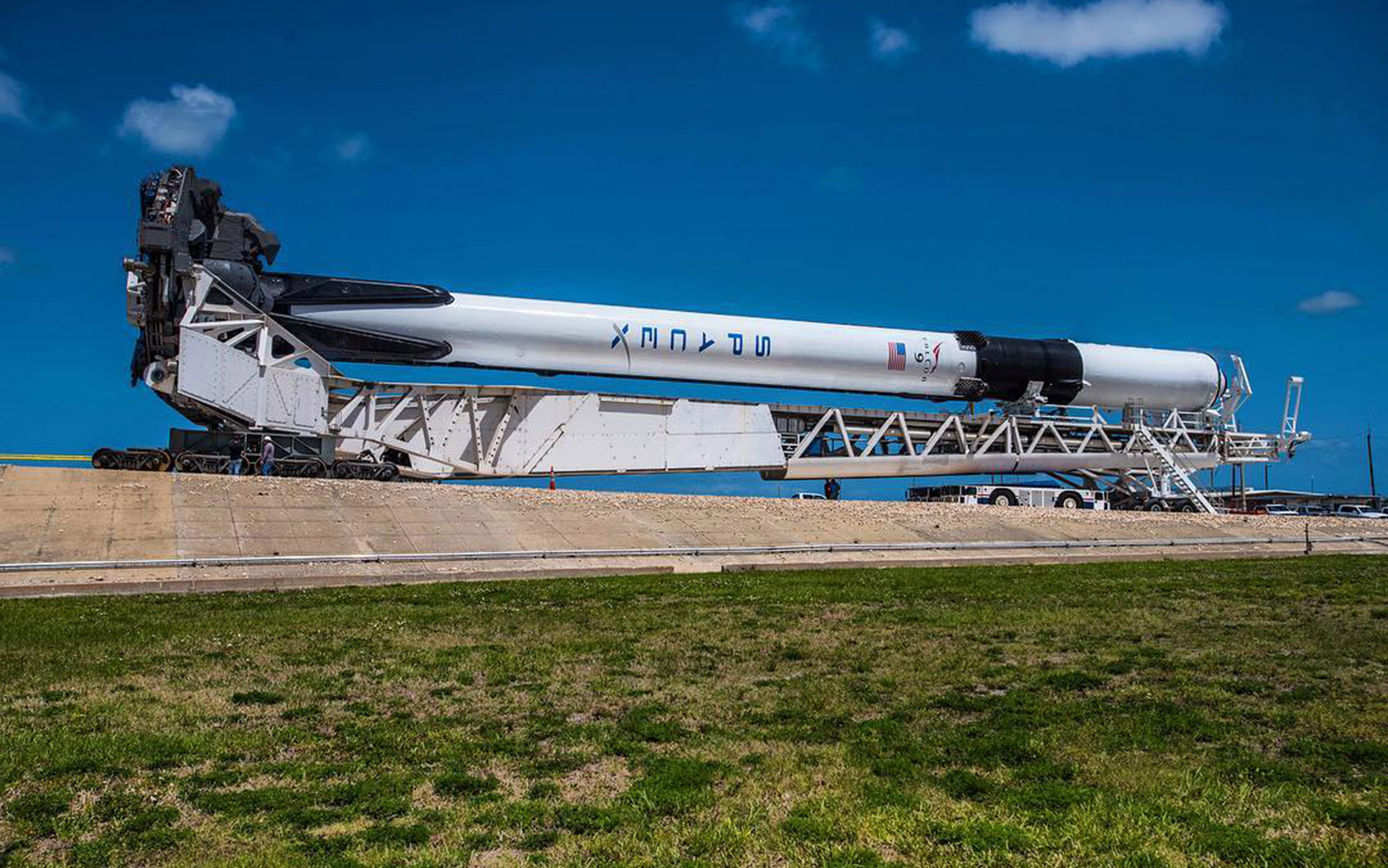SpaceX's New Falcon 9 Block 5 Rocket Debuts Today: How to Watch Live

Update for 6:34 p.m. EDT: SpaceX's has scrubbed its first attempt to launch the Falcon 9 Block 5 rocket due to a last-minute abort by the rocket's computer. SpaceX's next launch attempt will occur Friday, May 11, at 4:14 p.m. EDT (2014 GMT).
The newest iteration of SpaceX's workhorse Falcon 9 rocket will make its debut today (May 10), and you can watch the maiden liftoff (and landing attempt) live.
The first "Block 5" Falcon 9 is scheduled to launch the Bangabandhu 1 communications satellite for the government of Bangladesh today at 4:12 p.m. EDT (2012 GMT) from NASA's Kennedy Space Center in Florida. And the two-stage rocket's first stage will attempt to land on a robotic "drone ship" off the Florida coast shortly after liftoff. You can watch the action live here at Space.com and on our homepage, courtesy of SpaceX, or directly via SpaceX's website.
The launch window opens at 4:12 p.m. EDT and runs until 6:22 p.m. EDT (2222 GMT). There's just a 20 percent chance that bad weather will spoil the attempt, officials with the U.S. Air Force’s 45th Weather Squadron said on Monday (May 7). [6 Fun Facts About SpaceX]
The Block 5 features a number of upgrades that should increase the rocket's reliability and reusability, SpaceX officials have said. The first stage of the Block 4 Falcon 9 is limited to two launches, but the Block 5 first stage should be able to lift off 10 times — with just inspections between landing and launch — and up to 100 times with some refurbishment, according to company representatives. (SpaceX has stated a desire to reuse the two-stage Falcon 9's upper stage at some point, but hasn't made a concerted attempt to do so yet.)
The Block 5 was also designed to meet NASA's stringent crew-carrying requirements. SpaceX holds a multibillion-dollar NASA contract to fly astronauts to and from the International Space Station (ISS), and the company will do so using its Dragon capsule and the Block 5 Falcon 9.
The first crew-carrying flights using this system could come as early as this year, SpaceX representatives have said.
Breaking space news, the latest updates on rocket launches, skywatching events and more!
Boeing also holds a NASA crew contract. The aerospace giant will fly agency astronauts to and from the ISS using a capsule called the CST-100 Starliner and United Launch Alliance Atlas V rockets.
Bangabandhu 1 will be Bangladesh's first communications satellite. The spacecraft will provide a variety of broadcast and communications services to residents of the densely populated South Asian nation, according to French company Thales Alenia Space, which built Bangabandhu 1.
Follow Mike Wall on Twitter @michaeldwall and Google+. Follow us @Spacedotcom, Facebook or Google+. Originally published on Space.com.

Michael Wall is a Senior Space Writer with Space.com and joined the team in 2010. He primarily covers exoplanets, spaceflight and military space, but has been known to dabble in the space art beat. His book about the search for alien life, "Out There," was published on Nov. 13, 2018. Before becoming a science writer, Michael worked as a herpetologist and wildlife biologist. He has a Ph.D. in evolutionary biology from the University of Sydney, Australia, a bachelor's degree from the University of Arizona, and a graduate certificate in science writing from the University of California, Santa Cruz. To find out what his latest project is, you can follow Michael on Twitter.
